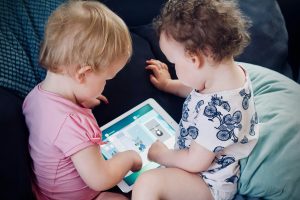Safe spaces for people to grow. In a quote by Dr. Michael Stephens, safe spaces are, “for every person who comes through our door to learn and grow (n.d.)”. This includes taking care of their well-being. One of his examples of well-being in the library, was the idea of a computer desk, at the library, attached to a slow-moving treadmill (thank goodness!). This is great for physical health, while exploring the catalog and library’s website, at the same time! (Stephens, n.d.) This idea came about as one of the soft skills, creativity, was being implemented. These skills are especially important in the service industry.
Dr. Stephens lists the qualities, or soft skills, that ensure an information professional will be successful in serving their patrons. They are : have curiosity, be creative, be confident, find balance (professional versus personal life), be empathetic, have character, have compassion, have mercy, and have understanding (Stephens, n.d.). When we exude these qualities, patrons are likely to sense their feel in the immediate environment, and are more likely to give positive responses to our assistance.
Reflective practice is vital in one’s life, but also in a workplace like libraries! When library staff reflect, and see a patron’s view in the public library, we can see where they are coming from, what they are wanting, and why they are reacting the way they do in a transaction. This understanding, and empathizing with this knowlege, can fuel how we navigate the transaction and likely promote a more positive outcome.
In one of his lectures, Dr. Michael Stephens explains that reflective practice has three parts: open-mindedness, responsibility, and wholeheartedness. Practice with love and serve with joy (n.d.). There is a saying that goes, “You get more flies with honey, than vinegar”. When we provide our services with love and empathy, we are showing people that they matter and that we are invested in helping them thrive in life. That is a huge part of our profession and should fuel how we enthusiastically go about our jobs, and our lives!
Reference
Stephens, M. (n.d.). Hyperlinked Library Reflective Practice [Canvas lecture]. https://sjsu-ischool.hosted.panopto.com/Panopto/Pages/Viewer.aspx?id=cc148563-15b7-4e17-bbab-af4b015d9a06

